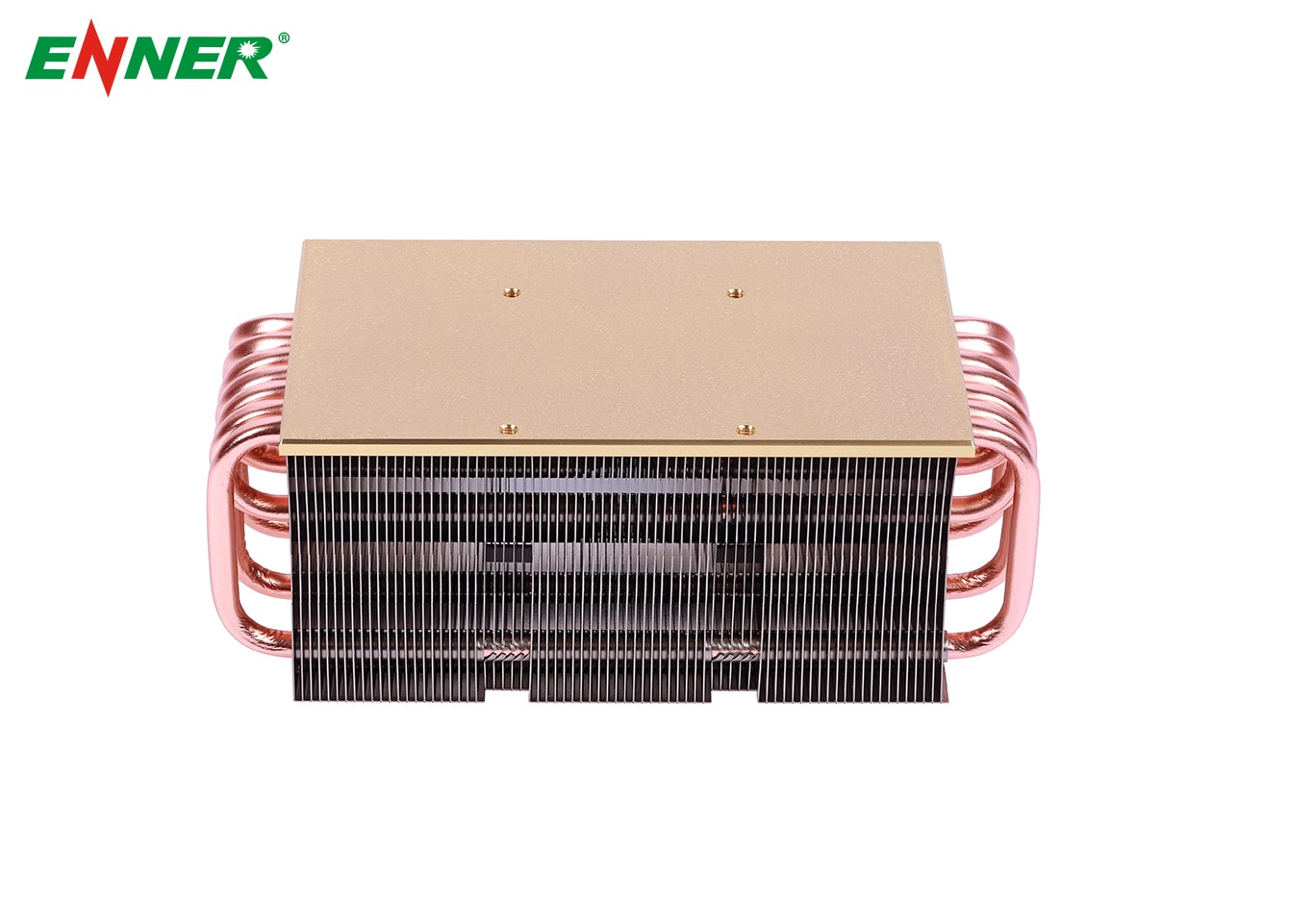The principle of heat pipe cooling
When one end of the heat pipe (hot end) contacts the heat source and absorbs heat, the working fluid inside the pipe is heated to the boiling point and begins to evaporate. This vapor then flows to the other end of the heat pipe (the cold end), where it releases heat to the surrounding environment or cooling device and condenses back into a liquid state at the condenser. The condensed liquid returns to the hot end through capillary action or gravity, and the cycle starts again.
The design of heat pipes can be very flexible, and they can efficiently transfer large amounts of heat in a very short period of time with almost no restrictions on distance. The high thermal conductivity efficiency of heat pipes makes them an important thermal management solution in a variety of applications such as electronic refrigeration, computer CPU cooling, solar collectors, and satellite thermal management systems.
The cross-sectional view reveals the internal dynamics of the heat pipe mechanism, showing how it efficiently manages heat by absorbing heat at the copper fins and then evaporating the working fluid within the heat pipe. The vapor travels along the pipes to the cooler areas of the heatsink, where it condenses into a liquid. This heat transfer process is color-coded to visually guide you through the heating and cooling stages. The arrows inside the heat pipe indicate the flow of steam and condensed liquid, completing the heat dissipation cycle. Keep communications equipment operating at optimal temperatures.

-
High Power Stage Lamp Heat Sink
The High Power Stage Lamp Heat Sink is designed for efficient heat dissipation in high-performance lighting systems. Featuring multiple copper heat pipes and large aluminum fins, this heat sink ensures optimal thermal management, extending the lifespan and performance of stage lamps. Ideal for high-wattage applications, it combines robust construction with efficient heat transfer to maintain stable operating temperatures, enhancing reliability in demanding environments. Suitable for professional stage lighting setups where effective cooling is essential for prolonged, high-intensity use.INQUIRE NOW -
SCR Bridge Fins Heat Sink
The SCR Bridge Fins Heat Sink is engineered for high efficiency in cooling silicon-controlled rectifiers (SCRs). Utilizing robust copper heat pipes and a layered aluminum fin design, this heat sink provides excellent thermal conductivity, effectively dissipating heat to maintain stable operation in high-power applications. Ideal for use in power control units, it ensures reliability by managing temperature effectively, improving the longevity and performance of sensitive electronic components. Suitable for industrial applications requiring consistent and efficient thermal management.INQUIRE NOW
Heat pipe technology is an efficient thermal management solution widely used in sectors requiring rapid and effective heat dissipation, such as electronics, aerospace, military, and medical equipment. Here are four detailed professional advantages of heat pipe technology:
Superior Thermal Conductivity and Rapid Heat Transfer
The core advantage of heat pipes lies in their phase change heat transfer mechanism, where the working fluid evaporates at the hot end upon heat absorption and then condenses at the cold end to release heat. This process enables heat pipes to transfer heat with far greater efficiency than traditional conductive materials. Utilizing the phase change between liquid and vapor phases allows heat pipes to transfer significantly more heat per unit of time, especially suitable for high heat load applications.
Adaptive Shape and Design Flexibility
Heat pipes can be easily bent and shaped to fit a variety of complex spatial designs and layout requirements while maintaining smooth internal working fluid circulation. This adaptability in design allows heat pipes to play a crucial role in systems where space is limited or the geometry is irregular , all while maintaining efficient heat transfer performance.
Reliability and Ease of Maintenance
As heat pipes contain no mechanical moving parts, their operational stability and reliability are exceptionally high. Their simple and durable structure makes them resistant to damage or aging, requiring virtually no maintenance during use. This characteristic is particularly suitable for environments with stringent reliability requirements, such as spacecraft and medical devices.
Efficient Energy Use and Environmental Adaptability
Heat pipe technology offers an environmentally friendly cooling method, excelling in scenarios that require the utilization or recovery of waste heat. It effectively transfers waste heat to places where it can be reused, thus improving the overall energy efficiency of the system. Additionally, heat pipes perform efficiently across a range of environmental temperatures, maintaining their effectiveness even under extreme temperature conditions.
Leave a message!
Our professional team will reach you within 24hrs!














 Crystal Xi
Crystal Xi





 Leave message
Leave message